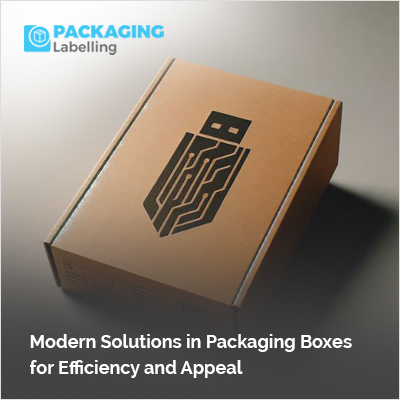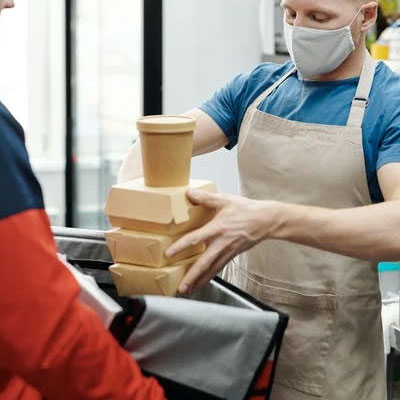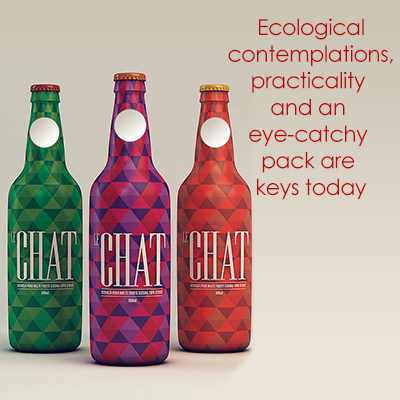Modern Solutions in Packaging Boxes for Efficiency and Appeal

In today's fast-paced market, packaging boxes play a crucial role in capturing consumers' attention and driving sales. With increasing competition, companies are continuously seeking modern solutions that offer both efficiency and appeal. From innovative designs to sustainable materials, the packaging industry is evolving to meet the ever-changing demands of consumers.
The Importance of Packaging in Today's Market
In a crowded marketplace, packaging serves as a powerful tool to differentiate your products from competitors and attract potential customers. It is often the first point of contact between consumers and your brand, making it crucial to make a positive impression. Well-designed packaging not only grabs attention but also communicates the value and quality of your products.
Modern consumers are increasingly drawn to packaging that is aesthetically pleasing, functional, and environmentally friendly. Packaging boxes that are visually appealing and easy to use can create a positive user experience, leading to repeat purchases and brand loyalty. Moreover, eye-catching packaging can also encourage social media sharing, amplifying your brand's reach and visibility.
Trends in Packaging Box Design
Packaging design trends are constantly evolving, reflecting changes in consumer preferences, technological advancements, and sustainability concerns. Today, minimalistic and clean designs are gaining popularity, emphasizing simplicity and elegance. Uncluttered packaging with bold typography and minimal graphics allows the product to take center stage, creating a sense of sophistication and modernity.
Another trend in packaging box design is the use of vibrant colors and playful patterns. This approach aims to evoke positive emotions and create a memorable experience for consumers. Bold and vibrant packaging can capture attention in a crowded marketplace and make your products stand out on the shelves.
Furthermore, personalized packaging is becoming increasingly popular as brands strive to create a more intimate connection with their customers. Customized packaging boxes with personalized messages or branding elements can evoke a sense of exclusivity and make customers feel valued. This personal touch can leave a lasting impression and foster brand loyalty.
Sustainable Packaging Solutions
In today's environmentally conscious world, sustainable packaging solutions are gaining traction. Consumers are increasingly seeking products that align with their values, including those with minimal environmental impact. As a result, brands are adopting eco-friendly packaging materials and practices to meet consumer expectations.
One such solution is the use of recyclable and biodegradable materials, such as cardboard, paperboard, and plant-based plastics. These materials can be easily recycled or decomposed, reducing waste and the carbon footprint associated with packaging production. By opting for sustainable packaging, brands can not only meet consumer demands but also contribute to a greener future.
Additionally, brands are exploring innovative packaging concepts, such as minimalistic designs that require less material and energy during production. This approach reduces waste and resource consumption while still delivering a visually appealing packaging solution.
Sustainable packaging not only benefits the environment but also enhances a brand's reputation as a responsible and conscious business.
Customization Options for Packaging Boxes
Customization is key to creating packaging boxes that resonate with your target audience and reflect your brand's identity. With the advancements in printing technology, brands now have access to a wide range of customization options that can elevate their packaging design.
One popular customization option is the use of unique shapes and structures. By deviating from traditional rectangular boxes, brands can create packaging that stands out and piques curiosity. Unconventional shapes can add a sense of playfulness or elegance, depending on the brand's positioning and target audience.
Moreover, brands can incorporate personalized branding elements, such as logos, slogans, or even QR codes, into their packaging design. These elements help reinforce brand recognition and create a cohesive brand experience across different touchpoints. Customization allows brands to create packaging boxes that are not only functional but also serve as a marketing tool.
Innovative Packaging Materials
Innovation in packaging materials is opening up new possibilities for brands to create unique and sustainable packaging solutions. From biodegradable materials to those with enhanced functionality, the options are expanding.
One such innovative material is bioplastics, which are derived from renewable sources such as cornstarch or sugarcane. These materials have similar properties to traditional plastics but are compostable or biodegradable, reducing environmental impact. Bioplastics offer brands the opportunity to create packaging that is both visually appealing and eco-friendly.
Another innovative material gaining popularity is smart packaging. Smart packaging incorporates technology, such as sensors or indicators, to enhance functionality and provide real-time information to consumers. For example, temperature-sensitive packaging can indicate whether a product has been exposed to unfavorable conditions during transit. These advancements in packaging materials not only improve product protection but also enhance the overall user experience.
The Role of Technology in Packaging Efficiency
Technology plays a significant role in streamlining packaging processes and improving efficiency. Automation and digitization have revolutionized the packaging industry, making it easier for brands to meet consumer demands while reducing costs and time.
One example of technology-driven efficiency is the use of automated packaging machines. These machines can handle various packaging tasks, such as folding, sealing, and labeling, at a much faster rate than manual labor. By automating these processes, brands can increase productivity, reduce errors, and meet tight deadlines.
Additionally, digital printing technology has made it easier for brands to create customized packaging without the need for extensive setup or high minimum order quantities. Digital printing allows for shorter production runs, making it more cost-effective for small businesses or those testing new product lines. This technology also enables brands to experiment with different designs and personalize packaging for specific customer segments.
Tips for Choosing the Right Packaging Boxes for Your Business
Selecting the right packaging boxes for your business requires careful consideration of various factors. Here are some tips to help you make an informed decision:
1. Understand your target audience: Consider the preferences and expectations of your target audience. What packaging design elements are likely to resonate with them? Are they more interested in sustainable packaging or personalized branding?
2. Align with your brand identity: Ensure that your packaging design aligns with your brand's values, personality, and positioning. Consistency across all brand touchpoints, including packaging, helps reinforce brand recognition and build trust.
3. Consider product protection: Evaluate the fragility or sensitivity of your products and choose packaging materials that provide adequate protection. The right packaging should ensure that your products reach customers in pristine condition.
4. Keep logistics in mind: Consider the size, weight, and shape of your packaging boxes to optimize shipping and storage costs. Efficient packaging design can reduce shipping expenses and minimize the environmental impact of transportation.
5. Test and iterate: Don't be afraid to experiment with different packaging designs and materials. Conduct market research and gather feedback from customers to refine your packaging strategy. Continuous improvement is key to staying ahead in a competitive market.
Cost-Effective Packaging Strategies
While packaging plays a crucial role in brand perception and sales, it's essential to balance aesthetics and functionality with cost considerations. Here are some cost-effective packaging strategies to help you optimize your packaging budget:
1. Standardize packaging sizes: Using standardized packaging sizes can help reduce material waste and streamline production processes. By minimizing the need for custom packaging sizes, you can achieve cost savings without compromising on quality.
2. Explore eco-friendly materials: Sustainable packaging materials, such as recycled or biodegradable options, can be cost-effective in the long run. These materials often offer comparable performance to traditional packaging materials while aligning with consumer demands for eco-friendliness.
3. Optimize production processes: Evaluate your packaging production processes for potential efficiency improvements. Automation and digitization can help reduce labor costs, minimize errors, and increase output.
4. Collaborate with suppliers: Establish strong relationships with packaging suppliers to negotiate favorable pricing and explore cost-saving opportunities. Bulk purchasing or long-term contracts can often result in significant savings.
5. Monitor and analyze costs: Regularly review your packaging costs and analyze their impact on your overall business profitability. Identify areas where cost savings can be made without compromising on quality or brand image.
Conclusion: The Future of Packaging Boxes
As consumer preferences and technological advancements continue to evolve, the future of packaging boxes looks promising. The industry is expected to witness further advancements in sustainable materials, customization options, and smart packaging solutions. Brands that embrace these modern packaging solutions and align them with their values will be well-positioned to drive sales, create lasting impressions, and foster customer loyalty.









.jpg)